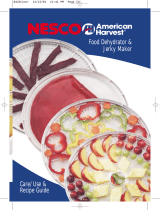
AWESOME BRAN MUFFINS
Make these for breakfast, and pop the
extra in your children's lunch box!
1 cup bran
2-1/2 cups all-purpose flour
1 cup boiling water
2-1/2 teaspoons baking soda
1/2 cup margarine
1/2 teaspoon salt
2 cups buttermilk
1 cup chopped dried apple, dates, raisins
or pineapple
2 eggs, beaten
1 cup granulated sugar
1/2 cup chopped walnuts or pecans
1/2 cup brown sugar, firmly packed
2 cups bran
1/4 cup sugar
Preheat oven to 400°F (205°C). Fill 24 muffin
pans with muffin liners. Wipe muffin liners
with vegetable oil. In large bowl, pour boiling
water over 1 cup bran and let stand. Add 1/2
cup margarine to bran/boiling water mixture.
Stir in buttermilk, eggs, white and brown
sugars and bran. In large bowl, sift together
dry ingredients: all-purpose flour, baking
soda, and salt. Add chopped dried fruit and
stir. Combine with wet ingredients and stir
only until dry ingredients are moist. Mixture
should be lumpy. Spoon into prepared muffin
cups. Sprinkle sugar on tops. Bake at 400°F
(205°C) for 20 to 25 minutes. Remove from
pan and place on rack to cool. Makes 24 of
the best bran muffins you've ever tasted!
Variation: Substitute 1 cup oat bran for
wheat bran for an oat taste.
HOMEMADE CHILI POWDER
Add to your favorite Mexican recipe or use in
ground meat for tacos.
3 ounces dried chilies (mild peppers such
as Anaheim, or a combination of mild and
hot peppers)
1 Tablespoon ground cumin
2 teaspoons salt
1 teaspoon ground allspice
1 teaspoon garlic powder
1 teaspoon onion powder
1 teaspoon ground oregano
1/2 teaspoon ground cloves
1 teaspoon ground coriander
Peppers dried in a dehydrator retain their
original color and flavor. They may either be
dried whole or in halves, skin side down.
Hotness and flavor will vary with the chilies
used. Removing the seeds will decrease the
hotness. Make sure that peppers are
completely dry and stored in airtight
containers. Remove and discard stems and
seeds. Whirl pods in a blender until finely
ground. Allow powder to settle. Add
remaining ingredients and whirl briefly. Store
in an airtight container. Makes 1/2 cup.
18 1-800-288-4545




















